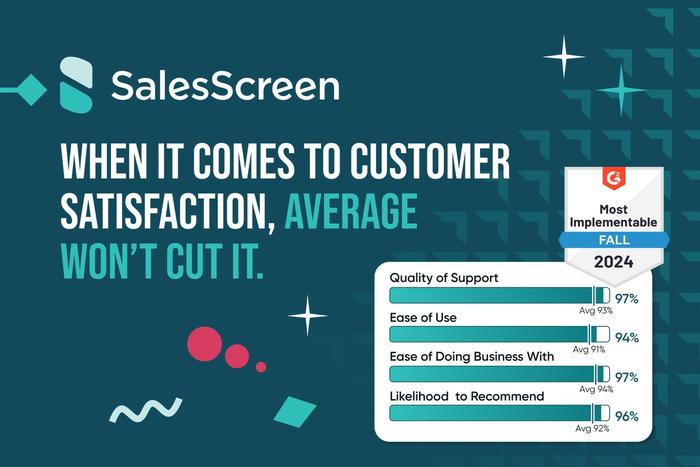The world of finance is home to some of the fiercest competitors in any field. It's the engine that keeps the economy going by distributing money and other resources. Working in finance is difficult because of the direct correlation between a country's financial stability and its GDP development.
Due to the constant barrage of new laws, regulations, and technology, the field is constantly being redrawn, with different players emerging as winners and losers all the time. And despite being one of the oldest and most powerful sectors in the world, the finance industry still faces many issues when it comes to modernizing not just its products but also its internal processes. With all of these factors working against it, it’s really no wonder those on the front lines of the sector find their work challenging, frustrating, and even unappreciated.
Sales performance management tools such as gamification have led to a consistently positive increase in goal attainment rates, workplace motivation, company culture, and retention for many of the world’s leading financial services organizations.
4 Major Pain Points In the Finance Industry & How to Solve Them
A radical shift has been occurring in the financial services sector for a considerable amount of time. With more and more consumers depending on digital tools and expecting businesses to adapt to their demands, financial institutions have been forced to make strategic shifts. Though perhaps not quickly enough.
The finance industry still faces a number of major pain points that lead to demotivated employees and, ultimately, hampers its progress. Here are four of the biggest challenges, and how gamification can be used to solve them:
1. Outdated sales tools
Keeping up with the competition from FinTechs and standardizing the customer experience are two of the biggest obstacles that businesses in the finance sector must overcome. But this hurdle becomes much more difficult to overcome when financial institutions are still hanging onto outdated tools and technologies like whiteboards and sales bells.
In order to maximize productivity and minimize expenses, the financial sector must rapidly adopt more modern technologies. In a 2020 survey run by PwC, 70% of respondents at the executive level cited rapid technological advancement as a significant issue.
Solution: Digital leaderboards with real-time feedback and results
Gamification software replaces the tools of the past with a digital sales tool that provides updates in real-time, bakes in best practices, and incentivizes good behavior.
By replacing whiteboards and bells with digital leaderboards and real-time notifications, companies are able to make results visible to everyone across every team and in every location. Since gamification software is digital, it can be easily updated to keep up with the times. This also provides companies that utilize gamification with a future-proof solution — all they need to do is implement it!
2. Lack of recognition
Recognition has been said to be one of the most powerful motivators an employee can have. Even more so than cash! And within such a cut-throat sector like the finance industry, it’s no wonder that employees are finding it hard to get recognition for their hard work — leading to decreased productivity and motivation.
Solution: Use TV screens to shine a spotlight on achievements
We’ll repeat this time and time again, everyone in the world performs best when their achievements are recognized. Gamification helps employees gain the recognition they deserve within the workplace, which in turn boosts their morale.
Businesses have the opportunity to pique the interest of employees, both new and old, in the sales process by utilizing TV screen celebrations in the workplace. Other members of the team can now place bets on when specific salespeople will reach new goals, and they can cheer on those members as they move closer to achieving those goals. Seeing these updates and celebrations on TVs across the office adds an air of excitement to the environment and incentivizes sales reps to close those deals at crucial moments for those clutch wins. Plus, there are the added benefits of there being more transparency about everything that's happening within the organization.
3. Insufficient attention to relevant metrics
It's fantastic to always set KPIs across the team to ensure that everyone is working toward the same goal. They are a great indicator of where you want your company to be and also act as a good motivator for employees. But what good are they if your employees aren't focusing on the proper tasks or if you're assessing things that don't actually matter? This is a big pain point within the finance industry.
Solution: Use competition to drive specific behavior on key activities
The lack of attention to relevant KPI metrics can easily be solved by utilizing gamification best practices. Competitions that are tailored to the needs of the participants are an efficient and entertaining approach to influence behavior in critical areas, and they also assist participants in achieving their objectives along the way.
4. Low level of management awareness
Possibly one of the most significant issues within the finance industry is a manager’s lack of awareness of key metrics and performance. Using outdated tools, especially when collecting data on relevant KPIs, can mean that key pieces of information can be lost and updates take longer. With a low level of managerial awareness comes frequent disconnects between expectations and reality, leading to friction between the hard-working staff and those who manage them.
Solution: Data visualization with customizable dashboards
Gamification software solves managerial attention problems by providing them with fully-customizable real-time dashboards.
If managers do not have access to up-to-date data that is presented visually, they may have difficulty effectively leading, guiding, and inspiring their staff. Dashboards provide a bird's-eye view of the corporate, team, and individual data for the goal of comparing results, anticipating outcomes, and eventually improving sales performance. Managers (and staff!) can utilize dashboards to acquire this bird's-eye view easily.
Four Ways Gamification Boosts Finance Results
Like with many other industries, the amount of activities completed on key goals is a direct indicator of business outcomes. That’s why driving performance on the right KPIs in a fun way can make all the difference in the working environment. Sales performance management technologies like gamification and data visualization are being utilized by several of the world's top banks and financial institutions to increase focus and productivity on critical goals.
Here are four benefits that can be enjoyed after implementing sales gamification elements into your finance organization:
1. Goal Setting and Attainment
Goal-setting and progress tracking are two of the most essential aspects of gamification. The ability to simply define goals and provide a more transparent path to achieving targets is provided to both employees and supervisors. People have a considerably better chance of succeeding in achieving their goals if they can actually see themselves making progress toward their goals and have concrete goals to actively work toward.
In a sector with such a large number of KPIs, it is crucial to have a solid understanding of what you should be concentrating on and when. The use of gamification makes it simple for managers to motivate their personnel in a way that is both entertaining and conducive to goal achievement. In addition, managers have the option of providing incentives for the successful completion of essential tasks and/or the achievement of significant milestones, which provides staff with additional motivation to stay on track and achieve their objectives.
2. Improving Customer Relations
Increasing the level of staff engagement is yet another advantage that your company can reap from gamifying the sales process. According to certain studies, using gamification software to motivate participants boosts engagement by 48%. And when your staff are more engaged, not only are they more likely to serve their customers, but they are also more likely to give top-quality service, which is of the utmost importance in the financial services sector.
3. Connecting Offices Across Locations
Bringing teams together can be a significant challenge for companies with teams spread across different locations. With gamification, celebrating together in real-time has never been easier. TV screen updates and personalized celebrations help to connect people across locations so that everyone knows what’s going on and is on the same page.
Additionally, an effective gamification platform sends notifications to all connected devices, including phones and tablets, to keep your remote and road teams informed of who just crushed their latest sale or deal. This cultivates a positive office and inter-office culture that results in happier employees and overall better performance.
4. Running More Effective Competitions
Gamification leverages people's natural drive for competition, achievement, and collaboration. Setting up and running effective sales competitions is easier, faster, and, most importantly, the effectiveness of your competitions is measured automatically and displayed in simple graphs.
Additionally, many gamification-related sales competitions are non-linear, so the same few people don't always win — giving middle and lesser performers a motivation boost. On average, using gamification competitions can boost middle performers' KPIs by 61% and low performers' KPIs by an incredible 107%.
Gamification in Finance Industry
Although gamification practices are typically seen as a tool for sales departments, they can be used throughout a company’s structure — even within finance! We’ve found that gamification software can be used to ease some of the major pain points faced by the finance industry as well as boost results. It's no surprise that gamification and data visualization are among the most popular sales performance management tools among the world's top banks and financial institutions.











